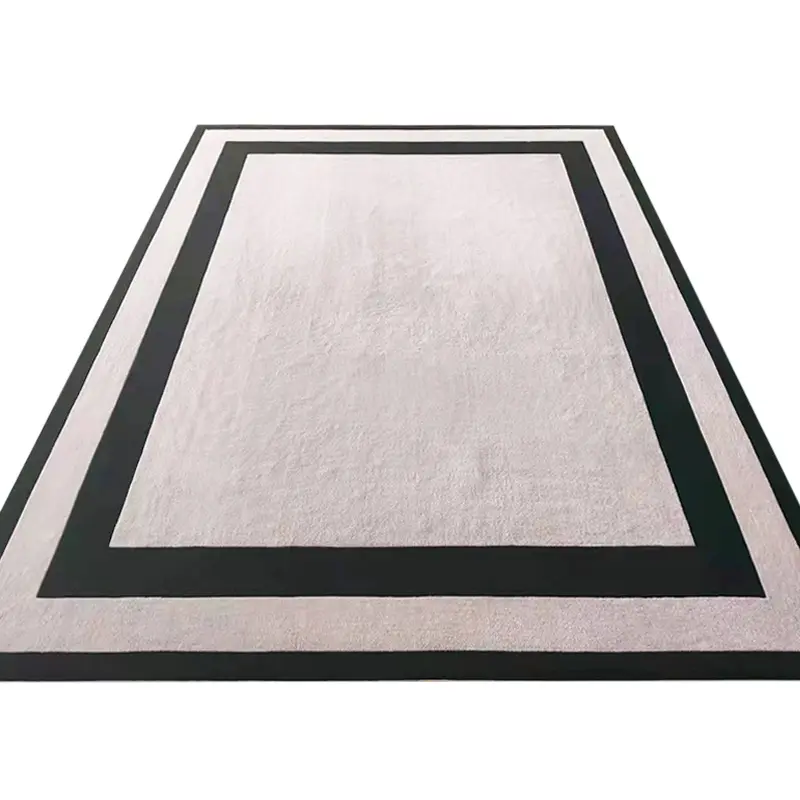For commercial spaces, selecting the right flooring is a decision that balances aesthetics, durability, and long-term value. While often viewed as a luxurious finish, white wool carpet is a powerful and strategic choice for businesses looking to make a lasting impression. It’s more than just a design element; it’s an investment in a space that reflects quality, sophistication, and a commitment to sustainability.
Beyond Aesthetics: The Unmatched Durability of Wool
In high-traffic commercial environments, durability is non-negotiable. Wool’s natural resilience sets it apart from synthetic alternatives. Its fibers have a unique, coiled structure that allows them to spring back into shape after being compressed. This property, known as “crimp,” ensures the carpet maintains its lush appearance even under constant foot traffic from employees, customers, and guests.
Exceptional Resilience: Wool resists crushing and matting better than most fibers, making it ideal for hotel lobbies, executive offices, and upscale retail locations.
Natural Soil and Stain Resistance: The natural lanolin coating on wool fibers repels dirt and liquids, causing spills to bead on the surface for easy cleanup before they can set. This is a critical advantage for maintaining a pristine look in busy commercial settings.
Flame Resistance: Wool is naturally fire-retardant and will not melt, making it a safer choice for commercial buildings where fire safety regulations are paramount.
Sustainability and Wellness in Commercial Design
Modern businesses are increasingly focused on creating sustainable and healthy environments. Choosing materials like wool aligns perfectly with these goals, demonstrating a commitment to environmental responsibility and employee well-being.
Renewable Resource: Wool is a natural, renewable fiber sourced from sheep, making it an eco-friendly alternative to petroleum-based synthetics.
Biodegradable: At the end of its life cycle, wool carpet can naturally decompose, reducing landfill waste.
Improved Indoor Air Quality: Wool fibers naturally trap airborne dust and allergens, acting as a natural air filter and contributing to a healthier indoor environment for staff and visitors.
Maintenance and Long-Term Value
The perceived challenge of maintaining a white carpet often deters businesses, but wool’s unique properties make it surprisingly manageable. A proactive maintenance plan ensures your investment retains its value and appearance for years to come.
Regular Vacuuming: Consistent, thorough vacuuming is key to removing surface dirt before it becomes embedded.
Immediate Spot Cleaning: Promptly addressing spills with a mild, wool-safe cleaner prevents stains from setting.
Professional Cleaning: Scheduled professional deep cleaning—typically every 6 to 12 months—is recommended to remove deep-seated dirt and rejuvenate the fibers.
By adopting a simple maintenance protocol, businesses can significantly extend the life of their carpet, reducing the need for premature replacement and improving their return on investment.
Conclusion
Choosing a white wool carpet for a B2B project is a forward-thinking decision. It is a powerful statement of quality and luxury that is supported by remarkable durability, natural resilience, and impressive sustainability credentials. By offering a blend of unmatched performance and sophisticated style, white wool carpet proves to be a smart, strategic investment for any business committed to building a long-lasting, elegant, and healthy commercial space.
FAQ
Is white wool carpet a practical choice for high-traffic commercial spaces?
Yes, wool’s natural crimp and elasticity allow it to resist crushing and matting, making it exceptionally durable and well-suited for high-traffic areas like corporate offices, hotels, and retail stores.
How does white wool carpet contribute to a sustainable business model?
Wool is a natural, renewable, and biodegradable fiber. Choosing it helps reduce reliance on petroleum-based products and supports a more eco-friendly business operation.
What is the best way to maintain a white wool carpet in a commercial setting?
For commercial use, the best maintenance strategy includes daily vacuuming, immediate spot treatment of spills, and professional deep cleaning at least once or twice per year to keep the carpet looking new and prolong its lifespan.
Does a white wool carpet fade in direct sunlight?
Like many natural fibers, prolonged exposure to direct, intense sunlight can cause some fading over time. It is recommended to use window treatments or UV-resistant films in areas with significant sun exposure to protect the carpet.
Post time: Sep-10-2025












